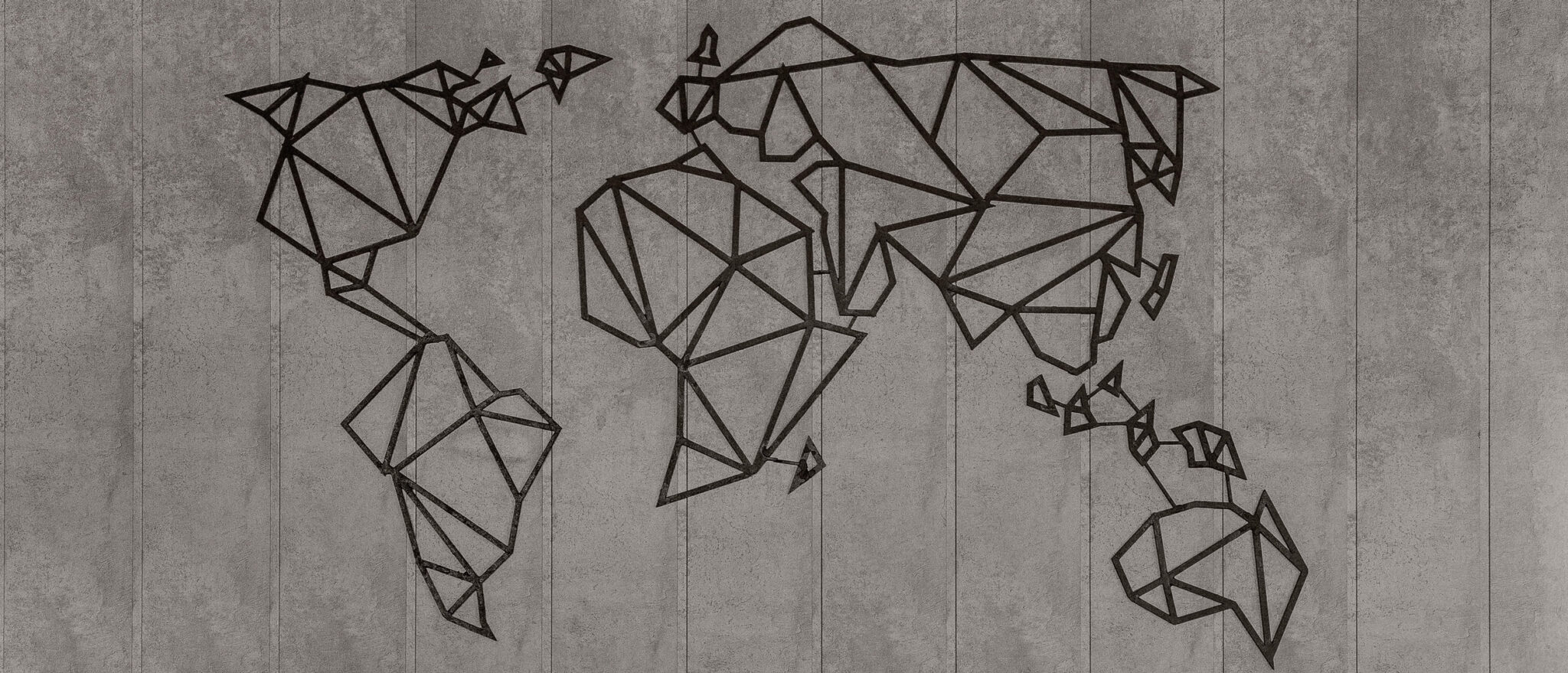
Brief description
The activity with the title “Where do we think? A Critical Thinking World Map” aims to initiate a process of reflection regarding the diagnosis of structural racism and Eurocentrism in Higher Education Institutions (HEI). This all-online activity introduces the participants to broader questions and issues addressed in the “Block A – Diagnosis” of the BRIDGES curriculum. In this activity, participants are invited to critically reflect on the rather grammatically unusual question of “Where do we think?”. Applying the “Critical Thinking World Map” exercise, participants are asked to first conduct the exercise individually, and then share their results in the theory workshop “Theorizing Structural Racism and Eurocentrism in Higher Education” of “Block A – Diagnosis”. The question “Where do we think?” aims to problematise the locations of knowledge production and consumption as well as the participant’s own situatedness within the geographies of knowledge.
This activity introduces the students to key concepts such as “Structural Racism”, “Decolonial Knowledge”, “Eurocentrism”, and “Migra*BPoC Resistance”, which will inform their diagnosis of HEI and knowledge production in general. Based on this introduction, participants prepare an analysis of the HEI they have studied or worked in. The exercise will enable the participants to trace their relationship to structural racism in higher education. The participants will work on two levels: first, they will work with personal accounts of their experience, and second they will analyse them on the basis of the theoretical framework offered.
The exercise “Critical Thinking World Map” of the BRIDGES toolkit seeks to chart the processes of inclusion and exclusion of people, contents and literature references in the university context. It allows us to map the ethnic, religious and/or national diversity present in societies and how they stand in relation to each other. This enables on the one hand to provincialize some assumptions made on the basis of Ethno-/Eurocentrism or occidentalism. On the other, it might show the extense on which some populations are excluded from Higher Education and how this might corrolate with their religious, racial, ethnic, class, sexuality, ability, gender and non-binary ascriptions. This allows us to observe how racism, migration, ableism, sexuality, gender and class might structure the access to Higher Education in different territories. The map also seeks to problematise the academic and literature references as well as the citation practice used in university curricula.
Objectives
The overall objective of this activity is to initiate a critical and reflexive process on structural racism and eurocentrism in HEI.
With the exercise “Critical World Thinking Map“, participants are further invited:
- to reflect on and problematize the content of their study and interrogate the logic, dynamics and practice of HEI.
- to diagnose structural racism and eurocentrism by working with key concepts such as “Structural Racism”, “Decolonial Knowledge”, “Eurocentrism”, and “Migra*BPoC Resistance”.
- to familiarize with the conceptual and analytical tools that will prepare them for their participation in the theory workshop “Theorizing Structural Racism and Eurocentrism in Higher Education” of “Block A – Diagnosis”.
This unit also provides participants with specific skills related to the “Critical World Thinking Map” that are:
- to critically reflect on the content and actors that compose our learning environment,
- to facilitate critical thinking through individual engagement and preparation of the map,
- and finally to produce visualizations (in the form of individual maps) of the geographical distribution of knowledge production and consumption as well as the participants’ situatedness within the geographies of knowledge.
Procedure (steps, instructions and timing)
- Participants need to download a world map.
- Participants will color-code different countries on that world map in order to carry out a critical analysis of the geographical distribution of their learning context and its resources. Please only use the colors suggested in the exercise “Critical World Thinking Map”.
- All participants should color-code on their map their current nationality(ies) and citizenship(s), the key sites that influence their personal and academic development, the sites their ancestors originate from (parents and grandparents).
- Then, to discuss the geopolitical distribution of the curriculum, participants should color-code on their map the nationality of the teachers across their degree, the countries of origin of 5 authors included in the bibliographical references of a representative or compulsory course in their degree or a course they taught by themselves (e.g. lecture on “Introduction to Sociology”, etc.), and finally the places of publication of 5 literature references included in that course.
- In the last step, participants individually answer the questions, provided in step 2 to 4 in the “Critical World Thinking Map” exercise. Engaging with these questions is a preparatory exercise for the following step 6.
- Participants are asked to send a picture or screenshot to this session’s facilitator, Sebastian Garbe, by July 4th 23:59. The maps will be then uploaded on the Miro board and discussed collectively in the theory workshop “Theorizing Structural Racism and Eurocentrism in Higher Education” of “Block A – Diagnosis”. Participants can contribute to the discussion with their engagement with the questions from the exercise in the previous step 5.
Necessary Materials
Required reading (concepts/tools)
Additional reading
Resources
- Concepts from the BRIDGES toolkit in the Virtual Lab
- Exercise “Critical World Thinking Map” in the Virtual Lab
Expected results
The participants will familiarise themselves with key concepts to diagnose structural racism and Eurocentrism in HEI as an entry point to the overall BRIDGES course/curriculum. By answering the questions provided in step 2 to 4 in the “Critical World Thinking Map” exercise, participants will have important talking points at hand for the discussions in the theory workshop “Theorizing Structural Racism and Eurocentrism in Higher Education”” of “Block A – Diagnosis”. Another key result of this activity are the individual maps, elaborated by the participants, provided as prints or in digital formats. The prints will be displayed during the course at the open space “In/visible Bridges”, the digital version on Miro and the BRIDGES Virtual Lab.


